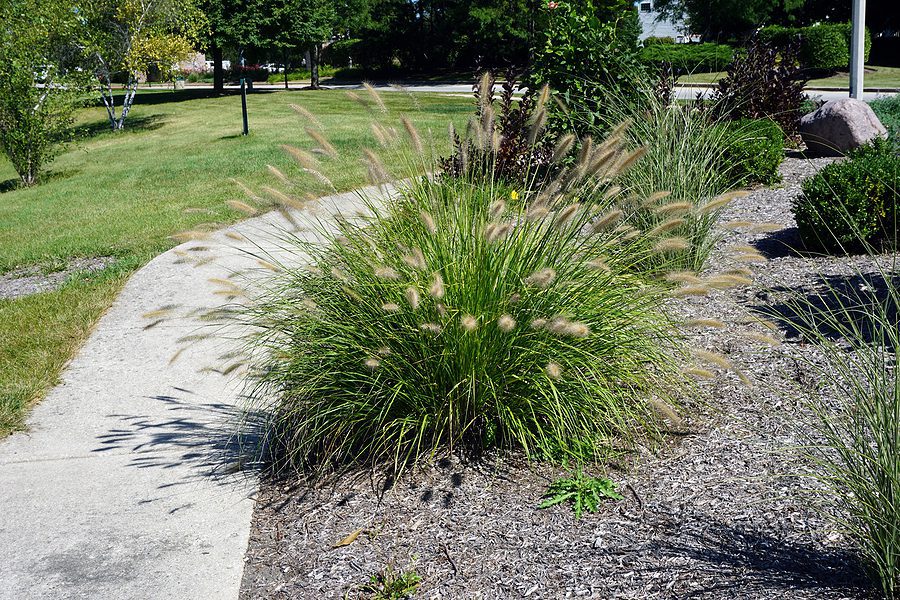Why Should I Convert My Yard to Xeriscape?

We live in a high, dry desert, keeping up a good lawn is difficult. Although Bermuda grass, our summer-active turf, is drought and heat tolerant, it does take an awful lot of effort and water to make it look nice.
If a green lawn for a year is all you wanted, planting winter ryegrass each fall is necessary, which means more work and more resources to maintain it correctly.
Understandably, converting from grass to Xeriscape can be a big decision for homeowners, businesses, and communities.
Xeriscape conversion is a big decision, and it is an important decision for homeowners, businesses and communities for a number of reasons. But don’t worry that Xeriscape whether rocks and cactus. Low water use plants: Hundreds of colorful, beautiful, useful plants for the landscape. Xeriscape is “common sense” landscaping for the Southwest “starving” for water-conserving methods of landscape gardening such as good design and plant selection, efficient irrigation, water saving mulches and so forth.
It does take a few ‘up front’ dollars to change grass into Xeriscape but it pays now and in the future. The price may fluctuate depending the current site conditions and desired finish options.
Extrapolating a cost for conversion, say $1.50 a square foot for grass kills and topping with granite, but something more like scraping off turf and grading and more might go from $2.50 to up past $5 a square foot. But when you consider the added costs associated with maintaining turf — water, fertilizer, mower maintenance, overseeding — you quickly recognize a 40-cent-per-square-foot savings per year … and that’s not even including time or labor.
So, with that in mind, you’d have 4-7 years till payback. Not bad considering all of the other rewards. If you need even more incentive to make the switch, here are the best reasons.
Time Saver – Grass needs to be cut once a week or every other week. Fertilizing should be done monthly. Mowers, weed whackers and irrigation all need maintenance. De-thatching and aeration are also occasionally necessary. Overseeding is very time intensive. Be sure to include weed, disease and pest control on your calendar.
Conserve Water – Bermuda and ryegrass need approximately 60 inches of water/year and we receive an estimated 8 inches of rain /year. Normally, the excess water is delivered through overhead sprinkler systems, which are frequently wasteful, vandalised and poorly managed. There is plenty of evidence to prove that getting ryegrass seed to germinate is a water hog that may need to be watered three or more times a day, and that water companies notice huge spikes in water usage in October and November when winter rye is planted. A Xeriscape, by contrast, requires half to two-thirds LESS water than a lawn.
Conservation of Water Quality & Energy – Xeriscape requires less or no fertilizers and pesticides. A lot of our water pollution is caused when this imbalanced fertilizing of our lawns, golf courses, and motor vehicle gardens runs off the urban landscape. Xeriscapes are also great on energy conservation. It has been demonstrated that a lawn can cut a home’s cooling needs by up to 4% relative to a house without vegetation covering. But a well-placed Xeriscape in trees, shrubs and vines can reduce cooling costs by up to 46 percent.
Save Money – Save on water, fertilizer, Modeing, seed, and labour. Other costs that are commonly overlooked: water damage to walls, gated or private streets, and damage to (or from) mowers in the process of “sucking dirt,” as well as the water-slathered mowers’ demo derby competition when they get competitive over the water while they are doing so. Homeowners might find additional savings in their wastewater charges, which are calculated based on total water usage. Further savings can be achieved through reduced energy bills when plants are used in specific locations around buildings.
Save Landfill Space – Grass clippings are a big waste in our landfills. When the rye grass is sown, the summer lawn is scalp, generating significant waste at the beginning, with constant debris from the mower from winter to spring.
Save the Air – Yard tools with 2-cycle engines (like gas mowers, blowers, and weed trimmers) can be polluting. In addition to that, the scalping method employed in overseeding also introduces dust and other grainy constituents into the atmosphere.
Cut Down Noise Pollution – Mowers, weed trimmers and leaf blowers will be considered a thing of the past by many residents. The drone of lawn equipment adds to an already noisy world.
Set The Example- Though one good conversion leads to another…you would be surprised at the influence you could have on your neighbors. Now, in this time of a forward-thinking approach and reverence toward our desert, you have a chance to show all of us that you understand the importance of doing what’s right.
Save Stress – Common problems such as fertilizer mistakes, disease creating dead spots, even constant care and feeding of irrigation when vandals or mowers attack. And you’re going to be cutting in the heat of summer when Bermuda thrives.
Not Need to Mow – And the number one reason to replace grass with Xeriscape…No More Mowing! This is your chance …How many parts of the country are there where you can just get away with not having a lawn at all?
Here’s how to convert:
The key to a successful switch is to completely kill the grass of the space you are switching. This is useful in preventing maintenance problems later on.
- Spray any glyphosate-based contact herbicide right onto the grass. This may take two or more applications from one to two weeks apart. It’s best to kill the grass in late summer, when it’s at its peak growth. The herbicide will also work more effectively if the grass is watered to green it up. Just don’t spray the plants you choose to keep.
- After your grass is dead, you have three options. First, you can scalp the grass low to the ground. The second alternative is to rototill the location. Handbook Rototill while the soil is a little moist, when the machine’s teeth can sink deep into the earth. You might also consider raking out the grass roots from the dirt following rototilling to keep them from sprouting anew. The best and most dramatic action to take, though, is to strip away three or four inches of dead grass using a tractor or sod cutter. Both of these pieces of equipment can be rented, or you may consider bringing in a professional landscaper, depending upon the quantity of grass being removed.
- It will take some effort to get rid of the grass, but the water-saving option is worth considering for many. 1,000 sq ft of turf requires 35,000 gallons each year, whereas low water use plants need only 15,000 gallons per year to keep it healthy. And it will be easier to run as well.
Be the first in your neighborhood to participate in Mesa’s new Grass-to-Xeriscape Rebate Program, promoting water-wise desert adapted plants.
The current owner of a single-family home may be eligible to receive a rebate for a future project of up to $2,100 when they remove at least 500 square feet of grass.
Use Albuquerque Bernalillo County Water Utility Authority “Desert Friendly Conversion Rebate” to transform grassy lawns to xeriscape.
This policy repays $3 for every square foot of grassroots taken out and replaced with landscape designed to withstand drought. The project is subject to pre-approval and follows certain requirements such as plant cover and application of mulch
